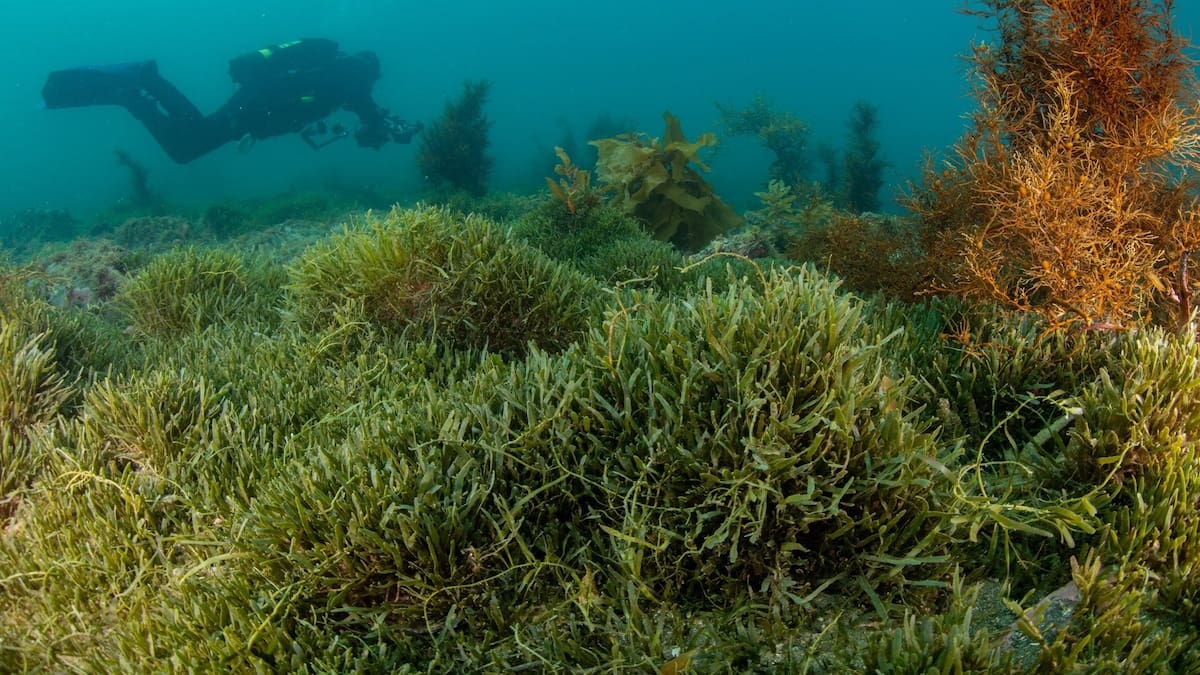A University of Auckland study, commissioned by Biosecurity NZ in 2024/25, examined environmental conditions that allow exotic caulerpa to thrive and its ecological and cultural impacts.
The recently released research found caulerpa can function as a secondary habitat and its growth can be limited by seabed type, ocean currents and sea urchin grazing.
However, the scientists warned that if allowed to form dense mats – as seen overseas – the seaweed could still pose serious risks. Monitoring and detection were essential to guide targeted management, including culturally grounded responses led by mana whenua.
To explore the cultural impact of caulerpa, the university scientists partnered with Ngāti Manuhiri Settlement Trust which presented its findings as a short film, A Fight for our Whakapapa: Exotic Caulerpa – the Seafloor Coloniser.
The film documents mana whenua responses to caulerpa incursions with seven Māori leaders discussing their lived experiences at the forefront of those battles.
Each speaks about the threat caulerpa poses to Māori cultural traditions, and their frustration with what they call the Government’s slow, fragmented and underfunded response to date compared to mana-whenua-led efforts.
Martin Cleave (Te Rarawa, Ngātiwai, Tainui), a member of the national ministerial advisory group on caulerpa, warned the invasive weed could cover the North Island’s east coast within the next four years.
“Four years ago, it didn’t exist in New Zealand … It’s happened that fast,” he said.
Martin Cleave (Te Rarawa, Ngatiwai, Tainui) in a scene from the film.
Cleave said Government funding for caulerpa research and control of $30million “is not taking it seriously”.
Ngāti Manuhiri chief executive Nicola Rata-MacDonald said the Government’s slow response had allowed the seaweed to spread. When a new infestation was discovered at Hauturu-o-Toi (Little Barrier Island) during filming in May, the iwi mobilised within 48 hours.
“The Crown says, ‘rapid response’ and it’s weeks away,” Rata-MacDonald said.
She noted iwi were also quick to bring in expert consultants from overseas.
Others among the group had also led their own responses in their rohe. Blair Anderson (Ngāti Pāoa) said the idea of having to live with caulerpa was “just not acceptable”. “We’re being asked to live without our taonga species essentially, to live without the opportunity for our kids to go down the beach and fish.”
Herearoha Skipper (Ngāti Tamaterā, Ngāti Pāoa) said iwi had formed a united front to address caulerpa.
“On the best of days, we can be the worst of enemies – but there’s only one moana.”
She said Government agencies withdrew when funding ran out but iwi weren’t going anywhere.
Ngati Manuhiri Settlement Trust chief executive Nicola Rata-MacDonald shares her views in the film.
Despite Government predictions that only limited caulerpa control might be possible, the leaders were confident eradication was achievable and pointed to their success at North Auckland’s Omaha Cove.
Bay of Islands’ Vicki Heta (Ngāti Kuta) said it could get better.
“There are a lot of clever people in Aotearoa and beyond.”
Biosecurity NZ director pest manager John Walsh said $24m allocated from 2021–2024 for a co-ordinated response involving iwi, councils, and communities was the largest marine biosecurity investment in New Zealand history.
A further $10.98m is earmarked for 2025/26, including $6.2m to Northland Regional Council for the large-scale removal and development of a new submersible dredge planer.
“Managing and removing exotic caulerpa is a massive challenge – it spreads as tiny fragments and has not been successfully eradicated anywhere in the world,” Walsh said.
Further study was planned to understand the weed’s recent dieback, he said.
A national Exotic Caulerpa Strategy, co-chaired by Rata-MacDonald and Biosecurity NZ’s Mike Inglis, has been presented to the Biosecurity Minister and is expected to be released publicly soon.
Sarah Curtis is a news reporter for the Northern Advocate, focusing on a wide range of issues. She has nearly 20 years’ experience in journalism, most of which she spent court reporting in Gisborne and on the East Coast.

